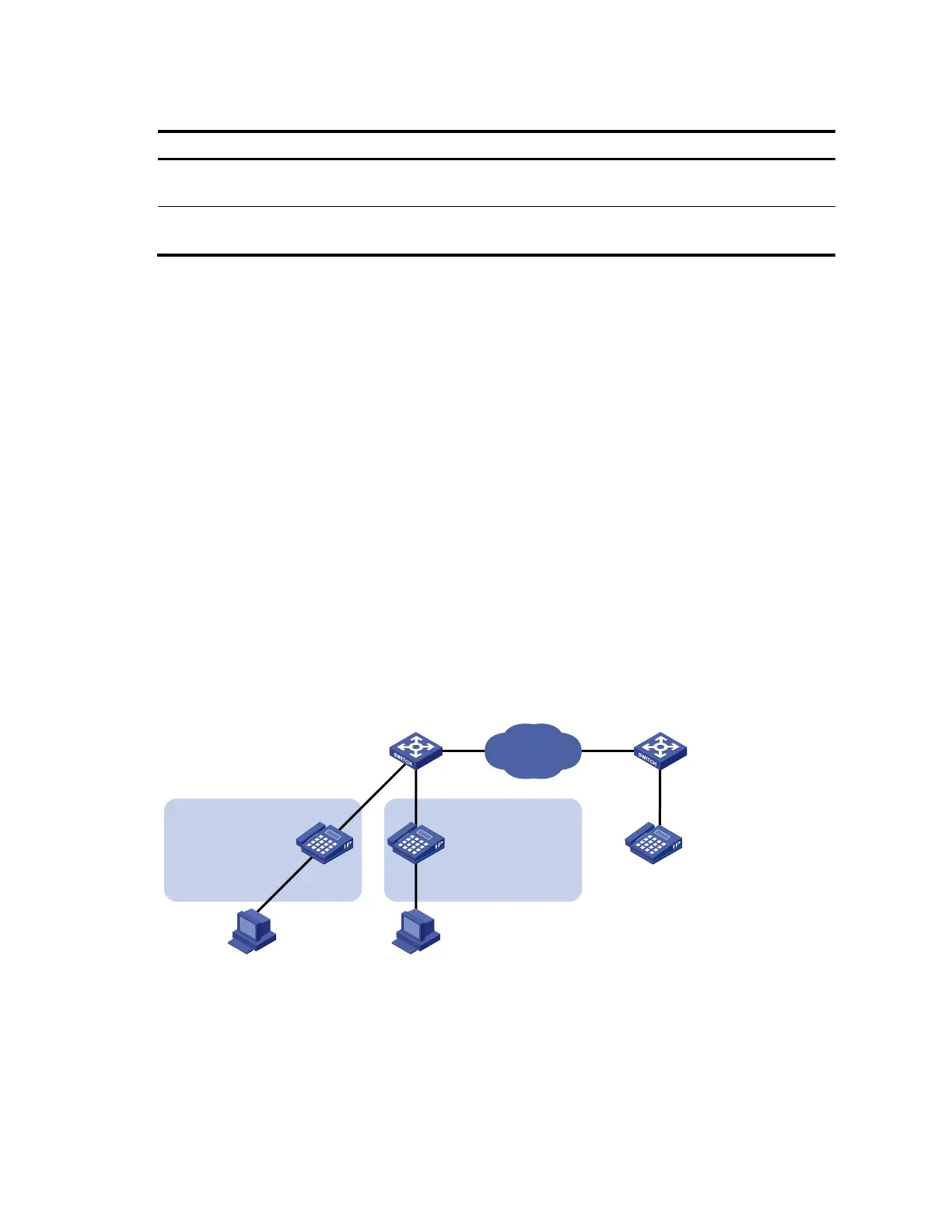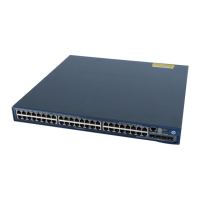139
Displaying and maintaining voice VLAN
Display the voice VLAN state
display voice vlan state [ | { begin | exclude
| include } regular-expression ]
Display the OUI addresses that
the system supports
display voice vlan oui [ | { begin | exclude
| include } regular-expression ]
Voice VLAN configuration examples
Automatic voice VLAN mode configuration example
Network requirements
As shown in Figure 42,
The MAC address of IP phone A is 0011-1100-0001. The phone connects to a downstream device
named PC A whose MAC address is 0022-1100-0002 and to GigabitEthernet 1/0/1 on an
upstream device named Device A.
The MAC address of IP phone B is 0011-2200-0001. The phone connects to a downstream device
named PC B whose MAC address is 0022-2200-0002 and to GigabitEthernet 1/0/2 on Device A.
Device A uses voice VLAN 2 to transmit voice packets for IP phone A, and uses voice VLAN 3 to
transmit voice packets for IP phone B.
Configure GigabitEthernet 1/0/1 and GigabitEthernet 1/0/2 to work in automatic voice VLAN
assignment mode. In addition, if one of them has not received any voice packet in 30 minutes, the
port is removed from the corresponding voice VLAN automatically.
Figure 42 Network diagram for automatic voice VLAN assignment mode configuration
Device A
Device B
GE1/0/1
GE1/0/1
IP phone B
010-1002
MAC: 0011-2200-0001
Mask: ffff-ff00-0000
0755-2002
GE1/0/2
IP phone A
010-1001
MAC: 0011-1100-0001
Mask: ffff-ff00-0000
Internet
PC A
MAC: 0022-1100-0002
PC B
MAC: 0022-2200-0002
VLAN 3
VLAN 2
Configuration procedure
# Create VLAN 2 and VLAN 3.
<DeviceA> system-view
[DeviceA] vlan 2 to 3
# Set the voice VLAN aging time to 30 minutes.

